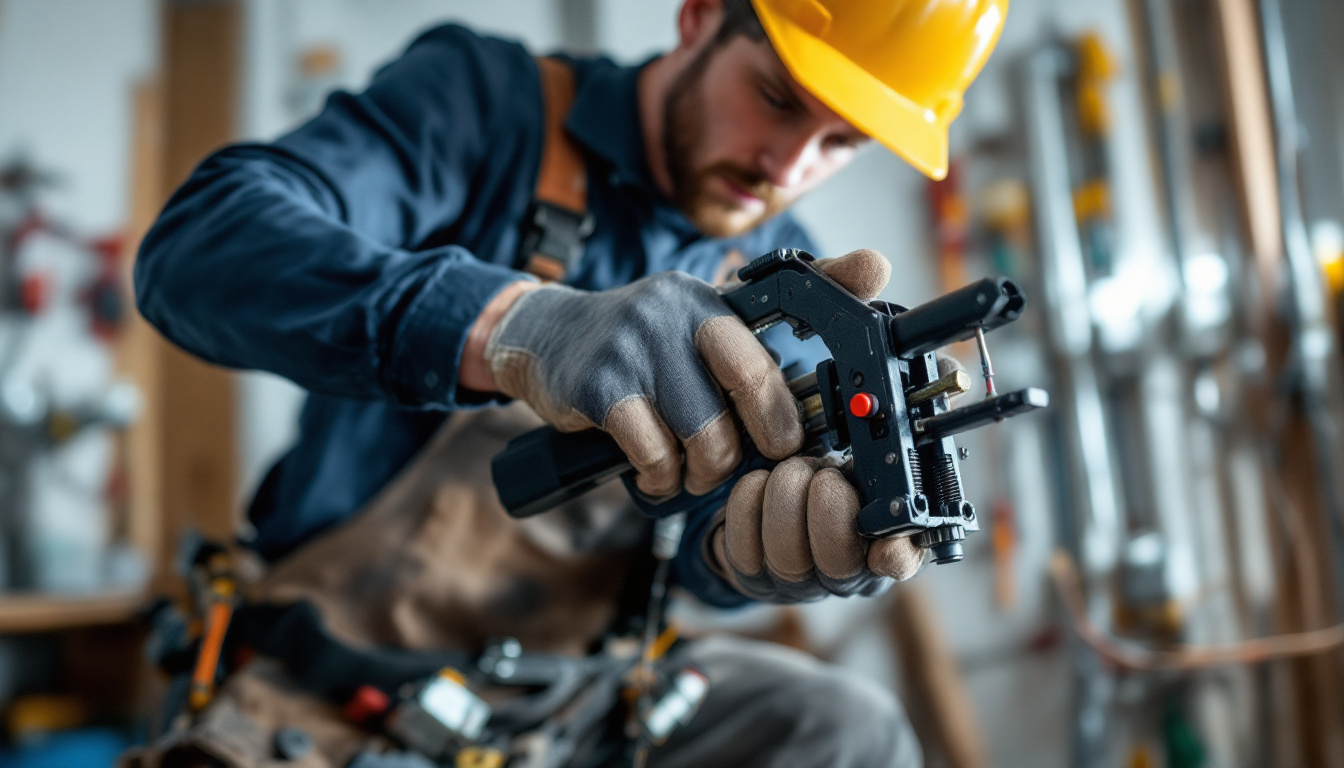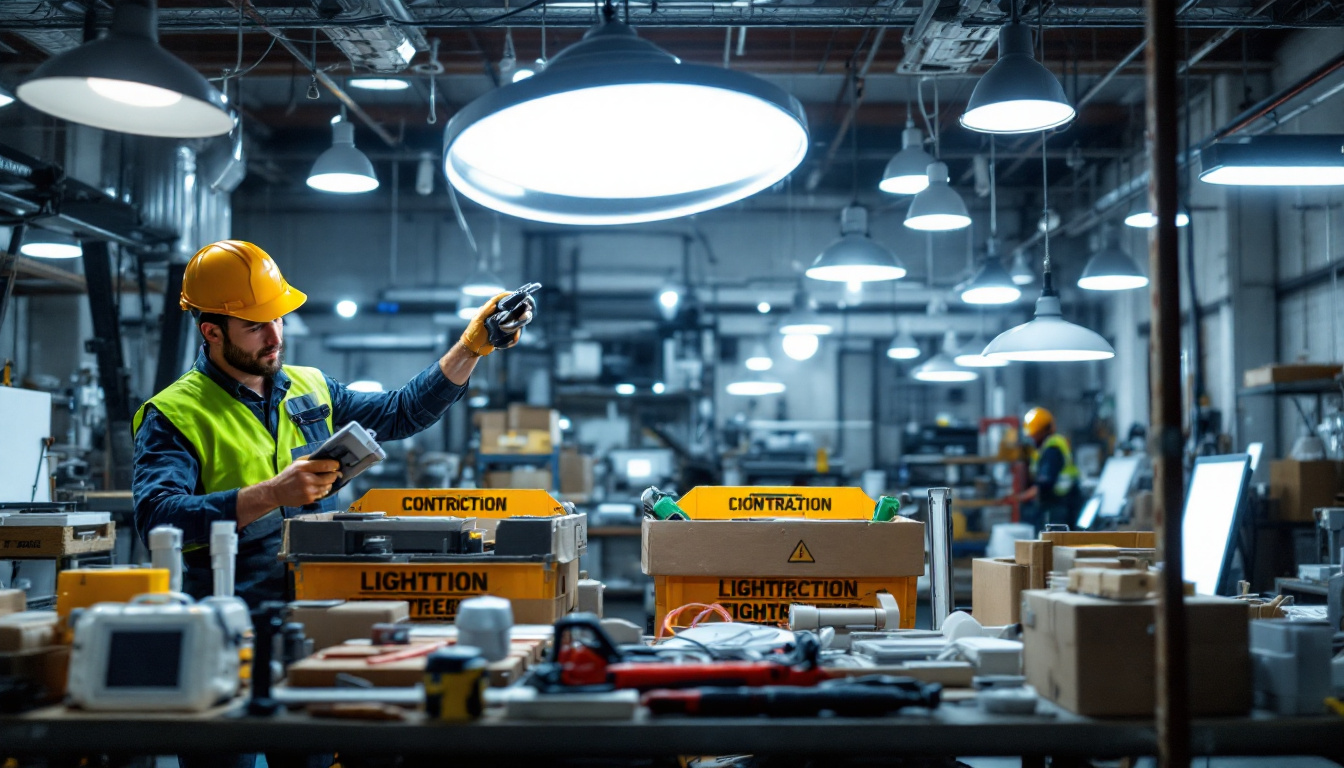

As a lighting contractor, the efficiency and effectiveness of your installations can significantly impact your reputation and bottom line. One essential tool in your arsenal is the wire puller, which can streamline the process of running wires through conduits and tight spaces. However, like any tool, using a wire puller requires knowledge and skill to avoid common pitfalls. This guide aims to provide insights into the effective use of wire pullers, helping you navigate potential challenges and enhance your workflow.
A wire puller is designed to assist in the installation of electrical wiring, particularly in situations where wires must be pulled through conduits or other restrictive spaces. The tool can vary in design, from manual pullers to electric versions, each offering unique advantages depending on the job at hand.
Understanding the different types of wire pullers available is crucial for selecting the right one for your project. Manual pullers are often more affordable and easier to transport, while electric pullers can significantly reduce labor time, especially in larger installations.
Wire pullers come in several varieties, each suited for specific tasks. Manual wire pullers typically involve a simple mechanism that allows the contractor to pull wire through conduits using physical strength. These are ideal for smaller jobs or when working in tight spaces where an electric puller may not fit.
On the other hand, electric wire pullers are powered tools that can handle heavier loads and longer runs of wire. They are particularly beneficial for large commercial installations where efficiency is paramount. Understanding the strengths and weaknesses of each type will help you make informed decisions on the job site.
In addition to the basic types of wire pullers, there are also specialized models designed for specific applications. For instance, some wire pullers come equipped with features like adjustable tension settings, which allow for more controlled pulling and reduce the risk of damaging the wire or conduit. Others may include built-in cable lubricators to ease the pulling process, making it smoother and more efficient. These enhancements can be particularly useful in complex installations where precision is key.
Moreover, safety should always be a priority when using wire pullers. Many modern electric pullers are designed with safety features such as automatic shut-off mechanisms and overload protection to prevent accidents. Manual pullers, while simpler, also require attention to safety practices, including proper body mechanics to avoid strain or injury. Always ensure that the tool is suited for the specific type of wire and conduit you are working with, as improper use can lead to costly mistakes or hazardous situations.
Despite the advantages of wire pullers, there are several common pitfalls that contractors may encounter. Awareness of these issues can help prevent costly mistakes and ensure a smooth installation process.
One of the most significant pitfalls is overloading the wire puller. Each tool has a specified load capacity, and exceeding this limit can lead to tool failure or damage to the wiring. Always check the manufacturer’s specifications before beginning a project, and ensure that the load you plan to pull is within safe limits.
Additionally, consider the type of wire being pulled. Different wire types have varying levels of flexibility and resistance, which can affect how much strain is placed on the tool. Using the appropriate wire for the job can help mitigate the risk of overloading. For instance, pulling a heavy gauge wire through a long conduit may require a more robust puller or additional manpower to avoid exceeding the tool’s limits. Understanding the specific characteristics of the wire can also guide you in selecting the right equipment for the task at hand.
Another common mistake is neglecting to lubricate the wire and conduit adequately. Proper lubrication can reduce friction, making it easier to pull the wire through tight spaces. Without sufficient lubrication, the wire puller may struggle, leading to increased wear on both the tool and the wire itself.
Using a suitable lubricant designed for electrical applications is essential. Avoid using substances that could damage the wire insulation or create a hazardous situation. Regularly inspect the lubrication process to ensure it remains effective throughout the job. Moreover, consider the environmental conditions where the installation is taking place. For example, in cold weather, certain lubricants may thicken, reducing their effectiveness. It may be beneficial to test the lubricant in the actual conditions before proceeding with the entire wire pull, ensuring optimal performance and minimizing the risk of complications during the installation.
Implementing best practices when using wire pullers can enhance efficiency and reduce the risk of errors. These practices are designed to ensure that the tool is used safely and effectively, leading to successful installations.
Before beginning a wire pull, planning is crucial. Assess the route the wire will take, identifying any potential obstacles or tight spots that may complicate the process. A clear understanding of the installation path can help you determine the best approach and whether additional tools or assistance will be needed.
Consider using a pull string to help guide the wire through complex routes. This can be particularly useful in longer runs or when navigating multiple bends in the conduit. A well-planned pull can save time and reduce frustration on the job site. Additionally, it’s beneficial to consult with team members or other tradespeople who may have insights into the layout of the building or any hidden challenges that could arise. Collaborating on the planning phase can lead to innovative solutions and a smoother workflow.
In addition to the wire puller itself, several accessories can enhance the pulling process. Wire grips, for example, can securely hold the wire during the pull, preventing slippage and reducing the risk of damage. Additionally, using a proper connector can help streamline the transition between different wire types or sizes.
Investing in high-quality accessories may seem like an additional expense, but they can significantly improve the efficiency and safety of your installations. Always keep a selection of essential accessories on hand to ensure you are prepared for any job. Furthermore, consider the environment in which you are working; for instance, if you are pulling wire in a damp or outdoor setting, using weather-resistant accessories can prevent corrosion and extend the lifespan of your tools. Understanding the specific demands of your work environment can lead to better decision-making and ultimately enhance the quality of your installations.
Safety should always be a top priority when using a wire puller. The potential for injury is present, and taking the necessary precautions can help mitigate risks.
Wearing the appropriate personal protective equipment is essential when operating a wire puller. This includes safety glasses to protect your eyes from debris, gloves to prevent cuts and abrasions, and steel-toed boots to safeguard your feet from heavy equipment.
Additionally, consider using hearing protection if operating an electric puller in a noisy environment. Ensuring that all team members are equipped with the necessary PPE can help create a safer work environment for everyone involved.
Understanding how to use a wire puller effectively requires training and practice. Ensure that all team members are familiar with the tool’s operation, including how to set it up, adjust settings, and troubleshoot common issues.
Regular training sessions can help reinforce safe practices and improve overall efficiency. Encourage team members to share their experiences and tips, fostering an environment of continuous learning and improvement.
Regular maintenance of wire pullers is vital for ensuring their longevity and performance. Just like any tool, neglecting maintenance can lead to decreased efficiency and potential failures.
Conducting routine inspections of your wire pullers can help identify any wear and tear before it becomes a significant issue. Check for signs of damage, such as frayed cables or worn-out components, and address these issues promptly.
Additionally, cleaning the tool after each use can prevent the buildup of debris and lubricants that may hinder performance. A well-maintained tool is not only safer to use but also more effective in completing installations.
Proper storage of wire pullers is equally important. Store tools in a dry, secure location to prevent damage from moisture or environmental factors. Consider using toolboxes or racks to keep them organized and easily accessible.
When storing electric wire pullers, ensure that the power source is disconnected and that any cords are neatly coiled to prevent tangling or damage. Taking the time to store tools correctly can prolong their lifespan and maintain their functionality.
Wire pullers are invaluable tools for lighting contractors, streamlining the process of running wires and enhancing overall efficiency. However, using these tools effectively requires awareness of potential pitfalls and a commitment to best practices.
By understanding the types of wire pullers available, avoiding common mistakes, and implementing safety measures, contractors can improve their installation processes and maintain a high standard of work. Regular maintenance and proper training will further ensure that wire pullers remain reliable assets on the job site.
Ultimately, investing time in mastering the use of wire pullers will pay dividends in the form of increased productivity, reduced errors, and enhanced client satisfaction. By following this guide, lighting contractors can navigate the complexities of wire pulling with confidence and skill.
Ready to elevate your lighting installations with the best tools and materials? Look no further than LumenWholesale for all your lighting needs. Our extensive selection of spec-grade lighting products is designed to meet the highest industry standards, ensuring you have access to reliable and high-performance solutions for every project. With unbeatable wholesale prices and the convenience of free shipping on bulk orders, you can trust LumenWholesale to provide premium lighting without the premium price tag. Discover the value of wholesale lighting at the best value and make your next project shine with LumenWholesale.

Discover how the Led Industrial Lights Factory is revolutionizing the lighting industry with cutting-edge technology and sustainable solutions.

Discover how industrial LED high bay lighting can transform your business’s bottom line.

Discover how Fan Warehouse is revolutionizing the lighting industry by enhancing efficiency for contractors.

Discover the essentials of LED lighting supply tailored for contractors.
Get notified when NEW deals are released.
Optimize your budget with wholesale discounts.
Only top-quality, specification-grade lighting products.
No additional costs at checkout - what you see is what you pay.
We understand the unique needs of contractors.